After more than ten years of development, machine vision in China has entered a period of rapid development. Various industries have increasingly high requirements for visual inspection, and there are also more and more projects that cannot be solved by conventional lenses. This requires some special customized lenses to solve. Today, we will share some application scenarios of our CHIOPT’s special lenses.
Perhaps everyone has encountered the detection needs of objects with significant height differences. Here is an example for everyone. In the winding section of the new energy lithium battery industry, during the winding process, the pole ears will gradually overlap, which may cause positional deviation. When the deviation is relatively large, the pole ears will be folded from the side for detection. The position of the pole ears is different, which means that the working distance from the pole ears to the detection system will change, The customer requires assuming a maximum change of 20mm to detect pole ear folding defects within a range of 20mm, and then determine OK NG based on the degree of folding. The difficulty of this project is to achieve a depth of field of 20mm while maintaining consistent magnification and no parallax. If there is parallax in the shooting, the size of pole ear folding in the front and back positions will differ in the image, which cannot meet the shooting needs.
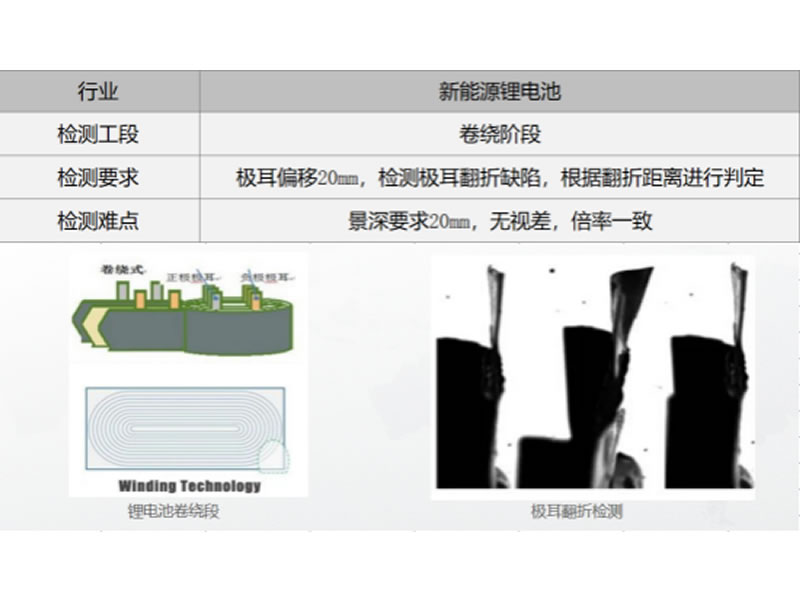
When it comes to no parallax, everyone’s first reaction should be a telephoto lens. Due to its unique parallel light path, telephoto lenses can maintain consistent image magnification. However, telephoto lenses are not perfect and cannot break the laws of optics. The depth of field of telephoto lenses is related to magnification, aperture, and NA values. We can see that even the telephoto lens with the highest depth of field, 0.1x, can only achieve 9.3mm in the list, Far from meeting project requirements;
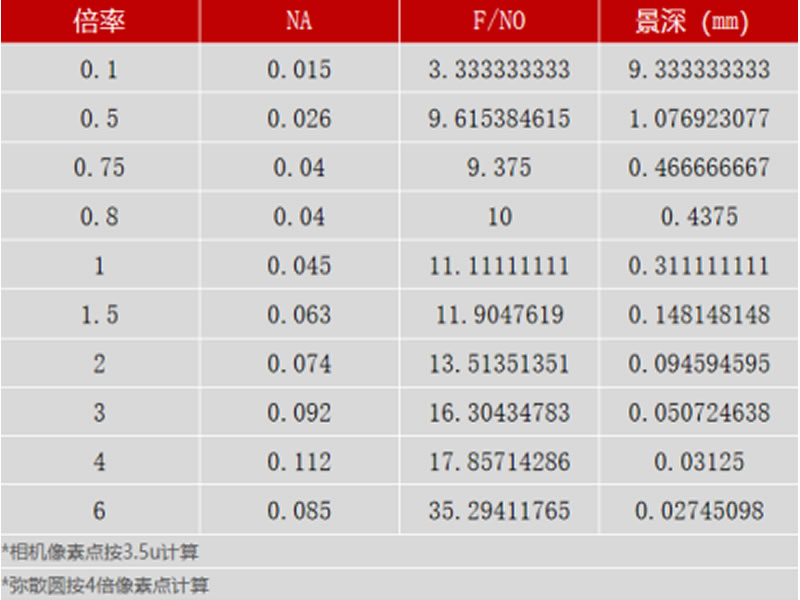
And for lenses that can enhance the depth of field effect, we can think of a sharm lens. By adjusting the sharm angle between the lens and the chip, as well as matching the appropriate shooting angle, a sharm lens can increase the depth of field effect of a regular lens by one-third or even higher. However, regular sharm lenses have parallax and cannot guarantee consistent magnification. So is it enough to combine the two? Making the telephoto lens into a Sham structure can increase the depth of field while maintaining the telephoto optical path. However, we conducted optical simulations of the on-site usage space and lens magnification and found that the depth of field still cannot meet the requirements.
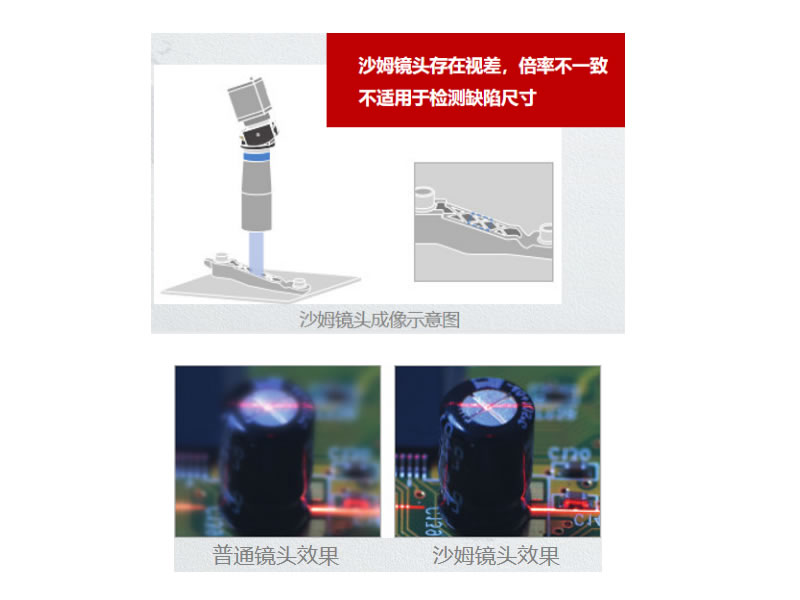
Based on the above, telephoto lenses can maintain consistent magnification, but the depth of field is not sufficient. Sham lenses can only meet the depth of field requirements in specific situations, and there may be parallax. Currently, there are also liquid lenses on the market that can meet these two requirements. By changing the curvature of the liquid lens, focusing can be achieved at different working distances, while also maintaining consistent magnification. However, the current price of liquid lenses is relatively high, Not advantageous in terms of cost.
Based on the above market situation, CHIOPT has designed a special type of ultra deep field electric focusing telecentric lens that can ensure both depth of field and magnification at a lower price and more advantageous cost. This lens is internally integrated with an ultrasonic motor, which can control the motor to achieve clear focusing even when the working distance of the object changes by 22mm without changing the lens position, that is, to achieve a depth of 22mm, And this lens is based on a dual telecentric lens to achieve electric focusing, which can ensure that the magnification remains unchanged within a range of 22mm depth of field, allowing for precise size measurement. The advantage of the ultrasonic motor used in the lens compared to ordinary stepper motors is that it has higher accuracy. The minimum accuracy that the motor itself can achieve is 0.03 °, and the corresponding focusing angle on the lens can even reach 0.001 °, Even subtle changes can be captured in a timely manner. The ultrasonic motor has a faster speed and can rotate up to 400 revolutions per hour, corresponding to a 22mm depth of field change on the lens that can be achieved as quickly as 1.5 seconds. Moreover, the ultrasonic point motor does not have the problem of rotating or burning the motor, with fast response speed and response time less than 1ms. The control interface is a universal RS232 interface, and the lens aperture F5.6-F22 is adjustable, which can achieve the same thing as a liquid lens, The price is nearly half lower than that of liquid lenses, which gives them a cost advantage. In addition to being able to detect the flipping of the electrode ears in the lithium battery winding section mentioned above, this lens can also be used for focusing and precise measurement of objects with large height differences, as well as for precise measurement of oblique objects through multiple photo synthesis. This lens can be used for testing projects that require both telephoto lenses and large depth of field or multiple focusing.
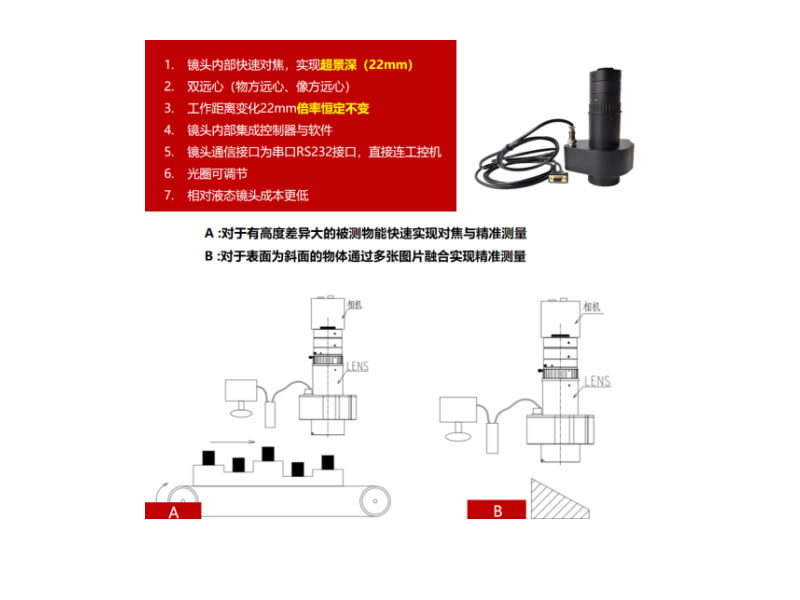
We have also applied the electric focusing module group to a wider range of conventional FA lenses, handing over the manual focusing operation to the machine. It can be applied in extreme environments where it is inconvenient to focus, such as high installation distances, high temperatures, noise, dust, and other environments. Every time you focus, you need to climb up and down. At this time, you can use the electric focusing lens and control the lens focusing through a computer; There are also some irregular object measurements that can achieve multiple focusing detections at one workstation, saving workstations and simplifying the visual system.
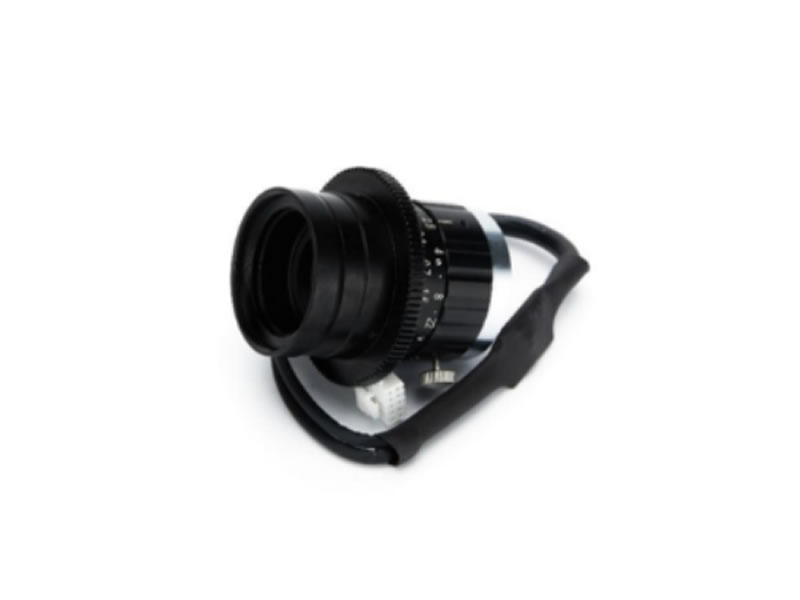
When it comes to simplifying the visual system, our colleagues who have a long-term understanding of our product may have some understanding. When detecting the outer defects of some small objects, the traditional solution is to use multiple lenses and cameras to shoot at different angles. However, this 360 ° outer wall detection lens can use one lens and one camera to shoot from the object, and the information on the outer surface of the object ring is reflected through the principle of refraction, Forming a circular coronal image on a single image simplifies the visual system and is suitable for defect appearance detection of small objects such as bottle caps and screws. Due to significant distortion, it is not suitable for size measurement.
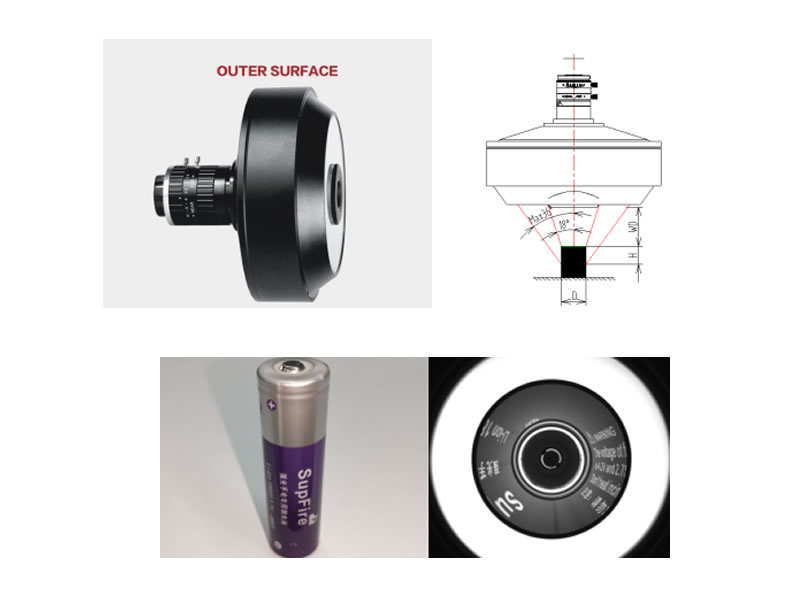
Correspondingly, there are also 360 ° inner wall lenses that detect the inner wall information of objects. The left one is suitable for inner wall detection in pipelines that need to be extended for shooting, which is an industrial pinhole lens that can clearly detect hidden features and defects inside. The right lens is shot above the object, with a special optical structure that allows it to have a large angle of view and a large depth of field, which can unfold the inner wall information. Inner wall photography is suitable for detecting cylinders, holes Objects such as bottles and threads.
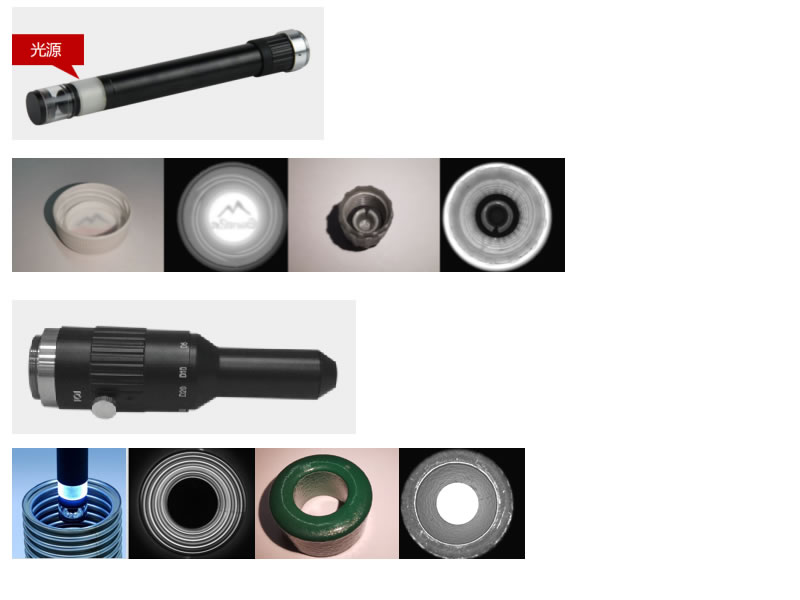
The above-mentioned outer wall lens also has limitations and is only suitable for detecting small-sized objects with an outer diameter of 30mm or less. Therefore, CHIOPT has introduced an octagonal prism lens to shoot objects from eight angles, with a detection range of 5mm-70mm. The front end is a large field telecentric lens, which can detect the outer and inner walls of objects separately through a special refracted and reflected light path. When the size and height are appropriate, it can simultaneously detect the inner and outer walls of objects, simplifying the system to a greater extent and saving costs. For wine bottle caps of this height, a conventional 360 ° outer wall lens needs to be shot separately at least twice, once on top and once on bottom. The octagonal lens can shoot completely at once, and the information on the inner wall of these fasteners can also be captured under suitable circumstances. This is the advantage of an octagonal lens, but because it is divided into eight faces, it cannot achieve the image stretching synthesis of a traditional 360 ° lens.

Machine vision detection presents a trend of high-resolution and hyperspectral imaging. In recent years, Sony has launched chips with working wavelengths covering visible light and near-infrared (400-1700nm), urging our lenses to move towards higher end fields, as ordinary lenses cannot fully utilize the performance of such high-end chips. Why is it not suitable?

Firstly, the coating of ordinary lenses is either in the visible or infrared wavelength range, which cannot balance the wavelength range of 400-1700nm. In addition to lens coating, another reason is that ordinary lenses have focal shift, and the refractive index of light at different wavelengths is different. Focusing is clear under visible light, and switching to infrared light will blur. Without correction, confocal imaging cannot be achieved, and hyperspectral imaging cannot be achieved. How do our common security monitoring lenses achieve visible light imaging during the day, infrared compensation at night, and infrared imaging without the need for re focusing? The secret is to add an ICR switch to the lens;
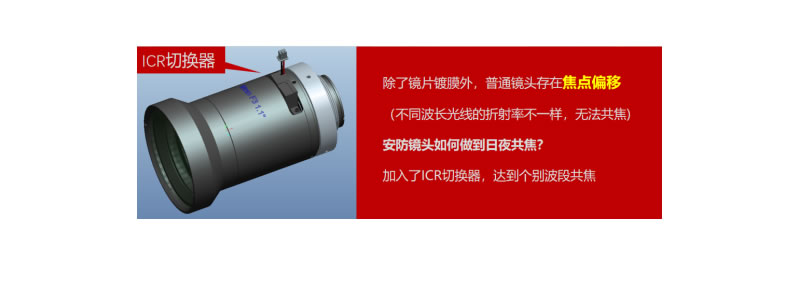
Firstly, the coating of ordinary lenses is either in the visible or infrared wavelength range, which cannot balance the wavelength range of 400-1700nm. In addition to lens coating, another reason is that ordinary lenses have focal shift, and the refractive index of light at different wavelengths is different. Focusing is clear under visible light, and switching to infrared light will blur. Without correction, confocal imaging cannot be achieved, and hyperspectral imaging cannot be achieved. How do our common security monitoring lenses achieve visible light imaging during the day, infrared compensation at night, and infrared imaging without the need for re focusing? The secret is to add an ICR switch to the lens;
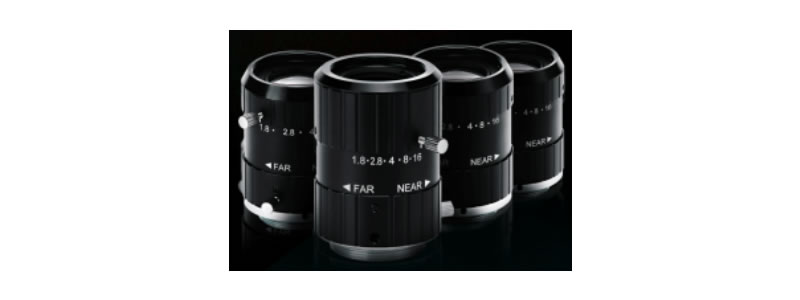
The main application areas are foreign object detection in grain, food packaging detection, as well as external and internal defect detection such as semiconductor silicon wafer detection, as well as material sorting for food materials, plastics, pharmaceuticals, and other materials.




0 条评论